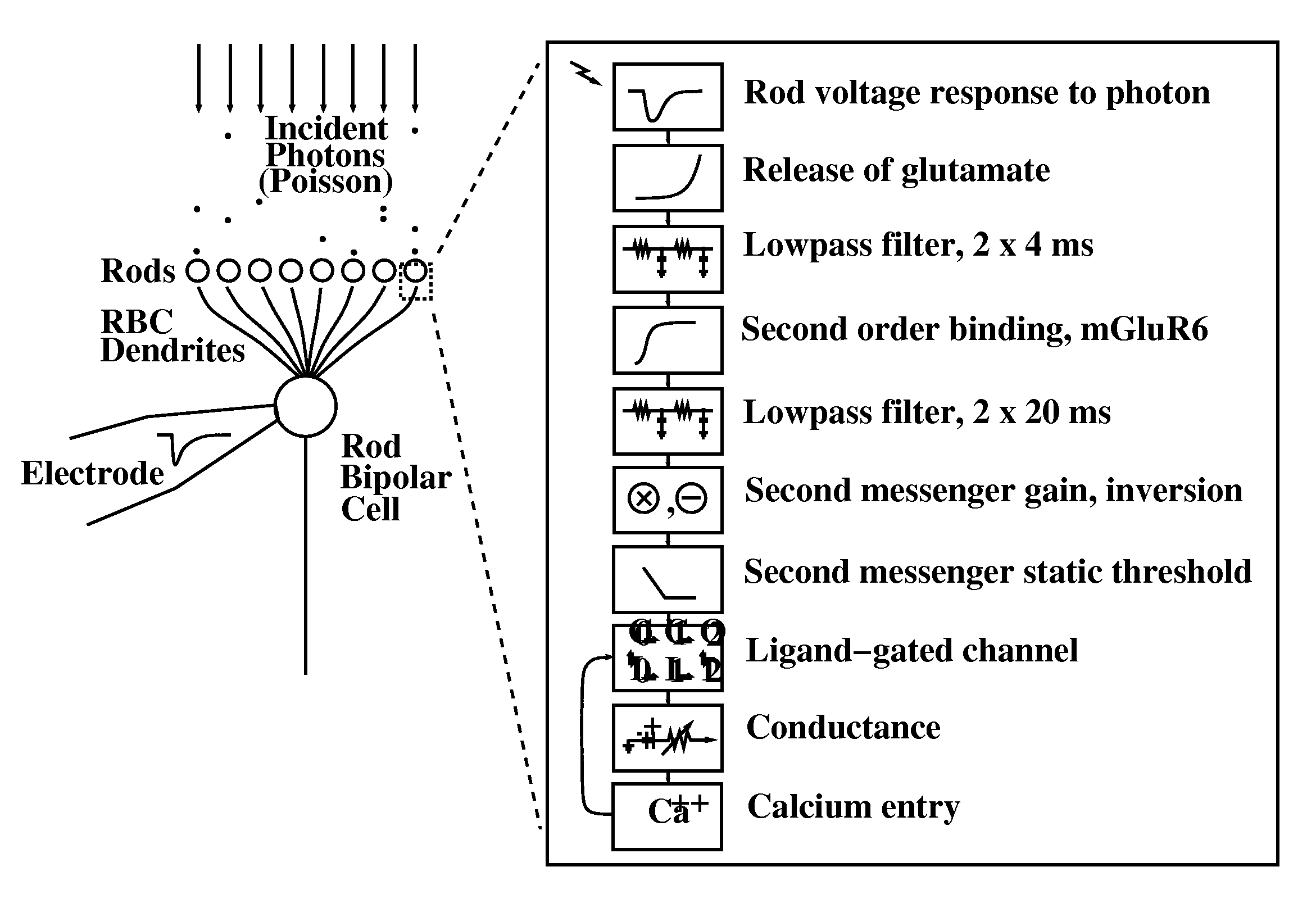We are currently studying the neural circuits in the scotopic rod pathway, which is responsible for night vision (moonlight to starlight). In this background range, each rod receives less than one photon at a time. Therefore in order for vision to operate at night the scotopic pathway contains anatomical convergence that collects signals from many rods. This allows our vision to be sensitive in starlight, where only 1 rod in 1000 receives a photon.
There is a problem with this scheme, however, because although rods can signal single photons fairly reliably, they also generate a low level of continuous noise, and they also generate "dark events" that occur from thermal isomerization of rhodopsin. This dark noise is also amplified by the anatomical convergence. To deal with this problem the rod pathway contains nonlinear thresholds at each stage where it contains convergence.
A nonlinear threshold exists in the synapse that transmits the rod signal to the rod bipolar cell. The threshold is a sharp boundary in the inner workings of the synapse that prevents any small signal or noise from being transmitted from the rod to the rod bipolar cell. See our recent study of this synapse.
In addition, the synapse saturates easily so that whenever a rod receives 2 photons, the signal that it transmits to the rod bipolar cell looks just like the signal from 1 photon. This saturation tends to remove some of the noisy fluctuation that comes from random capture of photons by a rod. See our recent study of the saturation and thresholding at this synapse.

Furthermore, the rod's response to a single photon varies in amplitude and duration. This variability is made worse by the sharp boundary of the nonlinear threshold, which tends to precisely remove the bottom portion of the rod single photon signal, leaving the top portion which varies in height. Since the threshold removes a constant fraction of the photon signal, what is left is relatively more variable in amplitude than the original single photon signal produced by the rod. Therefore, the rod synapse includes a mechanism to reduce this variability. Calcium that enters the postsynaptic channel turns off the channel, limiting the duration and amplitude of the single photon signal. See our recent study of the calcium feedback at this synapse.